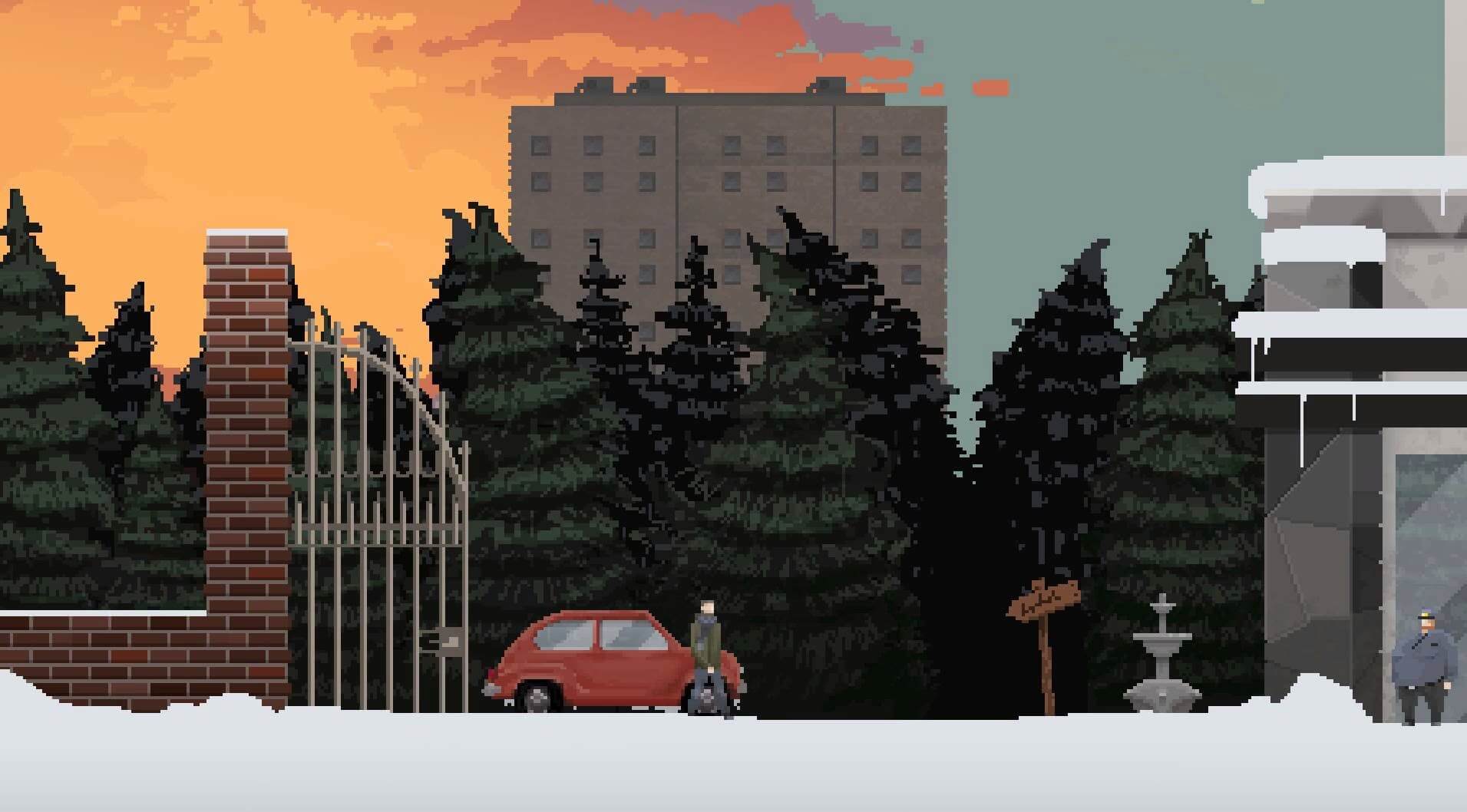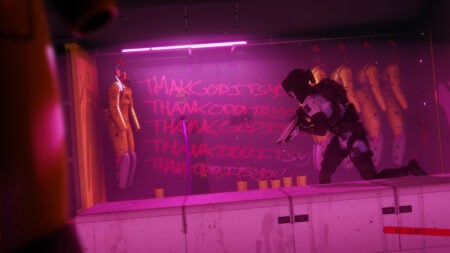Title: Uncanny Valley
Available On: PS4, PC,
Developer: Cowardly Creations
Publisher: Cowardly Creations
Genre: Side-Scrolling Survival Horror
Official Site: Uncanny-Valley-Game
Release Date: 4-23-2015 (Steam), 2-7-2017 (PS4, Vita), 2-10-2017 (Xbox One)
Where To Buy: PSN Store,
Modern day horror games have long attempted to get their players to buy into the terror of the worlds they create. Lately, the method of achieving this has been to incorporate an increased sense of realism, a focus on jump scares, and a habit of overwhelming the player with so many enemies they’re forced to run and hide. Lost in these methods is the most basic form of horror: suspense. Uncanny Valley, on the other hand, makes suspense and mystery the focus and shows how these are enough to keep you on the edge of your seat, even in its simplistic art form.
[embedyt] https://www.youtube.com/watch?v=sbjRC0X9vHE[/embedyt]
[gap height=”15″]
Perhaps an intentional juxtaposition, Uncanny Valley is a retro-style horror game created by Cowardly Creations as their first game. In it, you play as Tom, a man who takes a job as a security guard for an abandoned science facility and its adjacent apartment complex. Your coworker, Buck, gives you a walk around and instructs you of your nightly shift obligations. Besides the two of you, the only other person around is a woman named Eve who takes care of the apartments and keeps them from falling apart.
Each night you wake up, get dressed, and patrol four floors of the facility, filling the time by trying to piece together what happened there years before through emails and cassette recordings. After your shift ends, you return to your room, only to be plagued by mysterious night terrors.As you’d expect, your stay at the facility becomes stranger each night as more of the story unfolds. Through the various messages you read and listen to, you come to find that the scientists had been working on realistic artificially intelligent robots, or “thingamabobs” as certain emails will indicate. One of these AIs committed some sort of heinous act, and because of this, they decided to abandon the project and evacuate.
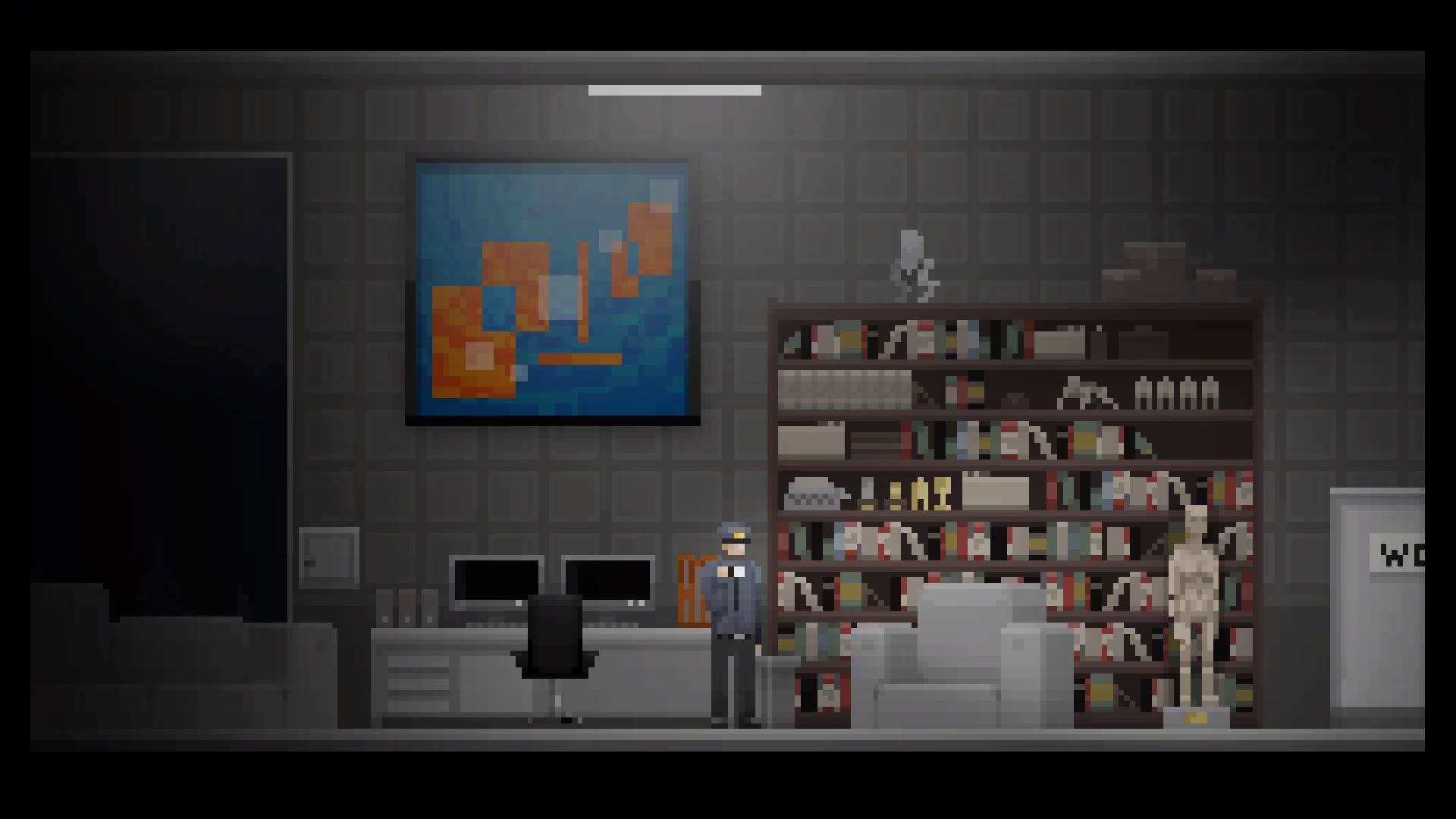
The gameplay is remarkably intriguing. Similar to an adventure game, your patrols around the facility include you collecting a variety of objects that don’t seem to be of any use until much later. Each day is allotted around six hours (in-game) for you to explore and collect as much information before returning to your room to sleep. In addition to this, a new challenge or objective is added each shift that is optional to accomplish but impacts how the story turns out. Based on your decisions during these times, as well as how thoroughly you explore the environment, the last third of the game can take dramatically different shapes.
Fortunately, the game is concise, which pushes the player to explore all of these different possibilities. My first playthrough concluded fairly quickly (and brutally), which immediately made me want to get back in and change up my approach. In doing this, I discovered new areas I hadn’t accessed previous, as well as finding even more terrifying obstacles between me and the ending I wanted.
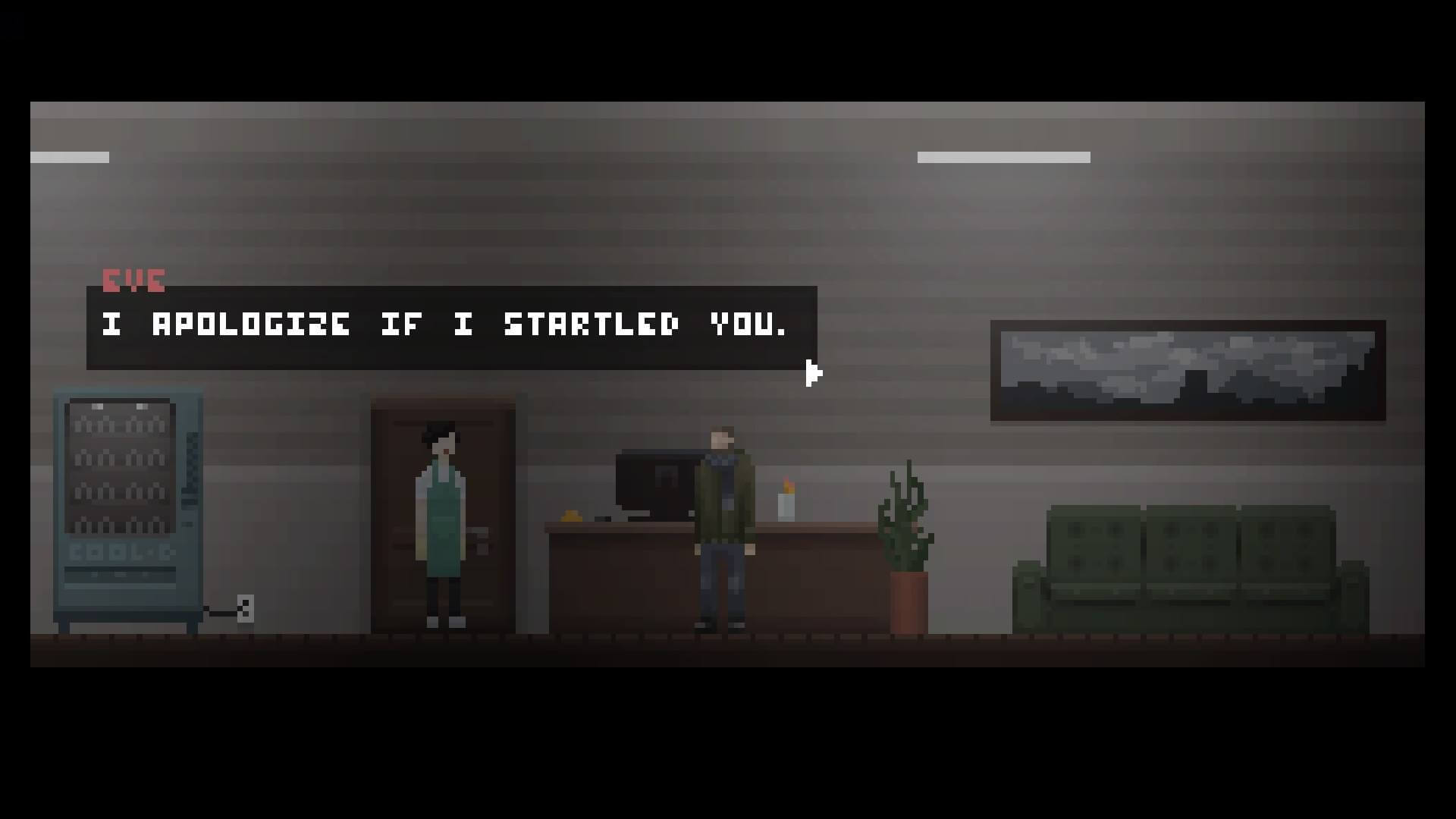
A common problem with adventure games typically is that they overwhelm you with strange objects that don’t make sense for use. Fortunately, Uncanny Valley doesn’t have this problem. Each object found makes sense when being used. The unfortunate part of this is that these objects can often be accidentally used for alternative purposes. I managed to try to kill myself at one point with a shard of glass by accidentally placing it over myself instead of the thing I wanted, which led my game to end.
The game’s environment and atmosphere may be its greatest strength. By the second night, I felt like I had a solid grasp of each floor in both the facility and the apartments. By my second playthrough, I even felt like I knew where all of the objects I needed were, which allowed me to bypass much of the confusion my first time around. The music and lighting that accompany Uncanny Valley add the suspense that the story already lays out. At one point, a breaker blows and has to be reset, leaving you alone in the dark with just a flashlight to protect you. This instance alone is enough to answer the question of how a retro game can be terrifying.
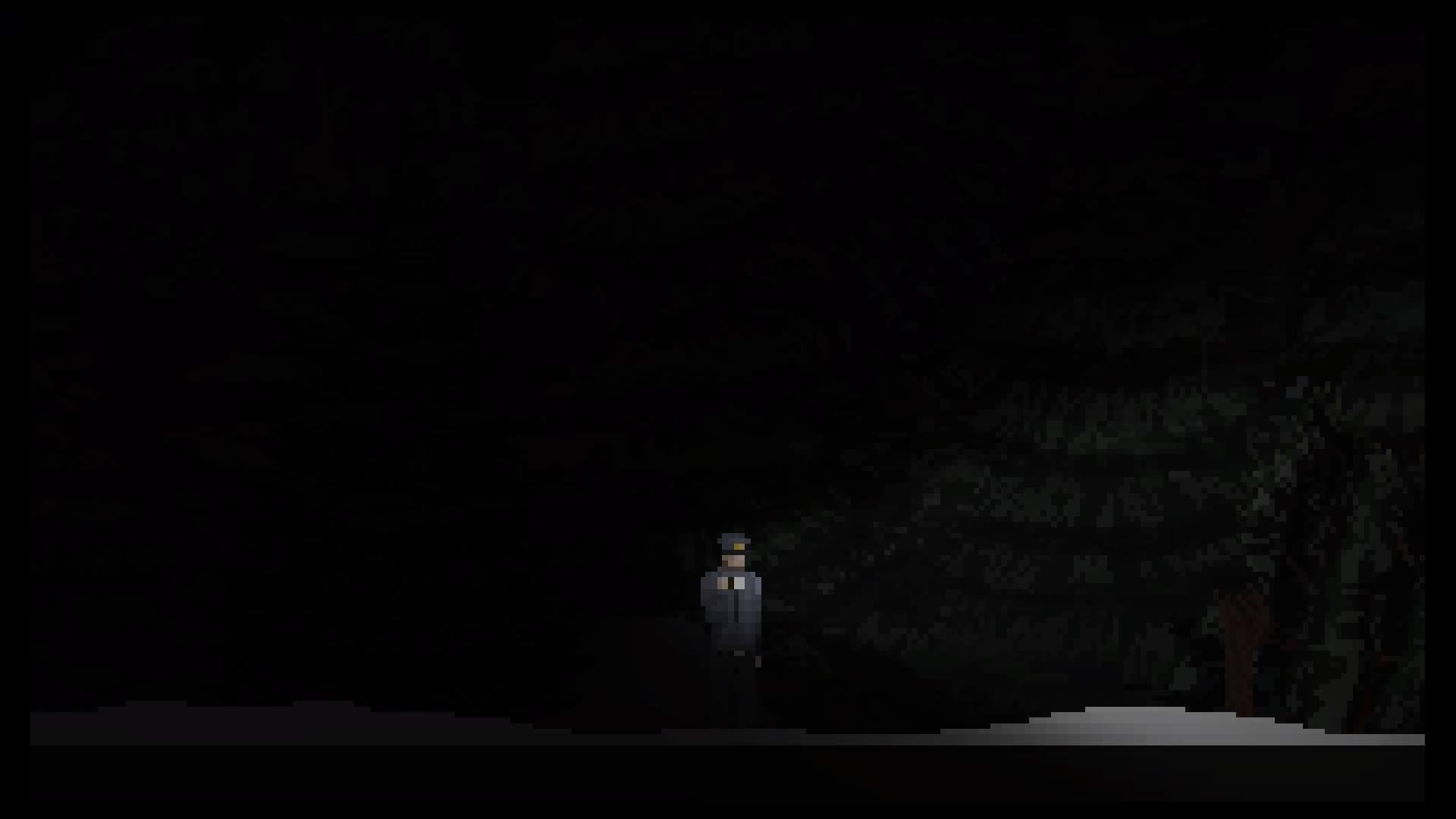
I didn’t run into many problems with the game save for a few instances. One of these was that the text boxes only contained a certain amount of words, meaning that often times only one word be forced to the next box rather than just making the box larger. The other was that, because of its old-school nature, some of the text was difficult to read. Because of this, I had to reread emails which cost me some time off my shift. Finally, around day three or four, the game stops having a shift timer listed but doesn’t explain why. While initially, I had thought this meant I had more time to explore, it became confusing to keep track of what time I had left before inevitably passing out wherever I was. In a game based around giving you limited time to explore each night, this was fairly annoying.
I didn’t expect Uncanny Valley to scare me, and I definitely didn’t expect it to make me as uncomfortable as it did. Whether I was running away from shadowy figures within my night terrors to no avail, or trying to figure out if death was waiting for me through each door, the game kept me in suspense all the way through till the end. While there were moments that left me confused or annoyed, even to the point of ending my game, the one thing Uncanny Valley did well was hooked me in from the get-go and make me want to finish it alive. It’s a game worth picking up and exploring more than once, which is something I rarely ever want.
- Gameplay: Easy to grasp, strange controls that get comfortable with time
- Graphics: Excellent lighting and art
- Sound: Ambient and horrifying
- Presentation: Concise and intriguing story, well put together game
[review]

